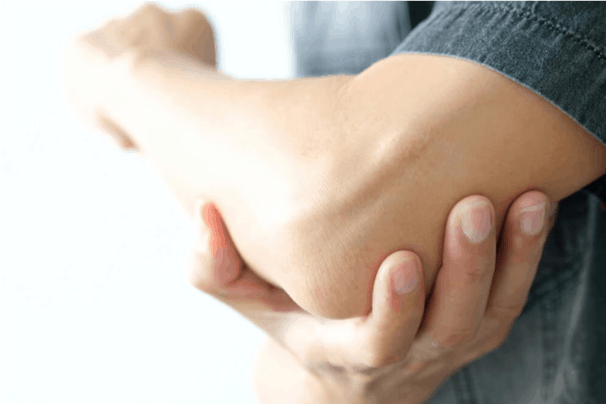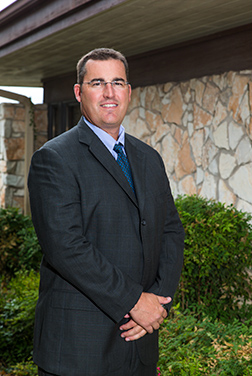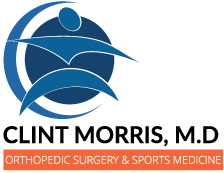If you or a loved one is experiencing any of the following symptoms or conditions, call the office of Dr. Clint Morris at (830) 895-4466 for further evaluation.
You do not have to be an avid tennis player to experience the pain of this injury. Just about anyone can develop this condition from a number of activities that involves repetitive movement at the wrist. The most common difference is where you feel the pain. Tennis elbow is felt on the outside of your elbow. However, there are a number of other conditions that could be causing your elbow pain, so it is best to make an appointment with an orthopedic specialist who can determine exactly what is causing the pain and set you up on a treatment plan so you are back to doing the things you love. Let’s take a more specific look at the signs of Tennis Elbow and how it is treated.
Signs of Tennis Elbow
Tennis elbow typically starts out gradually with a dull ache that eventually worsens as time passes. Many who are suffering from tennis elbow experience recurring pain radiating from the elbow all the way down the forearm, with pain that increases when they attempt to extend and straighten the elbow or flex their wrist with elbow extended. Other common signs of tennis elbow include:
- Difficulty grasping or lifting objects
- Sharp twinges when engaged in activities using the elbow
- Pain during and after activities involving the wrist
- Weak grip strength
- Numbness or tingling in the fingers
- A dull ache when resting
If left untreated, tennis elbow can progress to the point where you have difficulty with simple everyday activities such as turning a doorknob, shaking hands, brushing your teeth, carrying your purse or holding a coffee cup.

Treating Tennis Elbow
Depending on the severity of your injury, below are the most common treatments used for repairing tennis elbow, that your doctor will go into more detail when deciding on the best treatment option for you.
Cortisone Injections: Cortisone is used to control inflammation and relieve tennis elbow symptoms. They cannot be used long term, however. Too much cortisone can weaken sensitive tissues over time. Injections are given around the tendons and over the most painful point of the elbow, but are not directly injected into the tendon tissue itself.
Platelet Rich Plasma (PRP) Injections: Plasma is the liquid part of your blood that’s mostly made of water and protein. It lets red and white blood cells, as well as platelets move through your bloodstream. Platelets are a type of blood cell that makes your blood clot and play a role in healing. To collect plasma, a doctor draws blood from your body and uses a machine to separate the platelet-rich plasma from the rest of the blood. Then your doctor will inject your plasma in the area being treated with a needle. Once platelets are injected, they break down and release growth factors, which are compounds that help cells repair and renew.
Physical Therapy: A therapist may use massage, ultrasound and other muscle-stimulating techniques to promote healing. You might also be referred to an ergonomic specialist and/or occupational therapist if your condition is related to work activities.
Bracing: When tennis elbow is linked to your occupation, it can be difficult to avoid activities that cause pain. In this case, functional bracing can be used to disperse forces that would normally be absorbed at the point of injury. Braces apply pressure on the muscles below the elbow to allow you to complete your daily activates with less discomfort. The braces can be worn throughout the day but should be removed before going to sleep at night.
Surgery: According to the American Academy of Orthopaedic Surgeons, 80 to 85 percent of tennis elbow cases will improve after six months to one year of nonsurgical treatment. However, some patients may require surgery to remove the pain-producing tendon. A few weeks after surgery, the patient will begin gradual strengthening exercises with the goal to return to light activity within 4 to 6 weeks and more competitive activity within 4 to 6 months.
Dr. Clint Morris understands the frustration of living with elbow pain and the fear that accompanies it. Often, most put off calling to schedule an appointment with an Orthopedic surgeon because they think the only other option is surgery, since they have already gone through traditional treatments with their primary physician… Physical therapy, injections and/or prescription drugs. Dr. Morris encourages his patients to communicate their needs as detailed as they can, trusting that together, you and Dr. Morris will work as a team to come up with the best treatment option for your condition. As one of the top board certified Orthopaedic and Sports Medicine surgeons in the Texas Hill Country, you can rest assure that Dr. Morris is fully committed to addressing your elbow pain and getting you back to doing the things you love.
To schedule an appointment with Dr. Clint Morris or for more information about his services, please contact us here or at our Kerrville location (830) 895-4466.

 Dr. Morris has more than 23 years experience in the Texas Hill Country in the care of Sports Medicine and orthopedic surgery.
Dr. Morris has more than 23 years experience in the Texas Hill Country in the care of Sports Medicine and orthopedic surgery. 